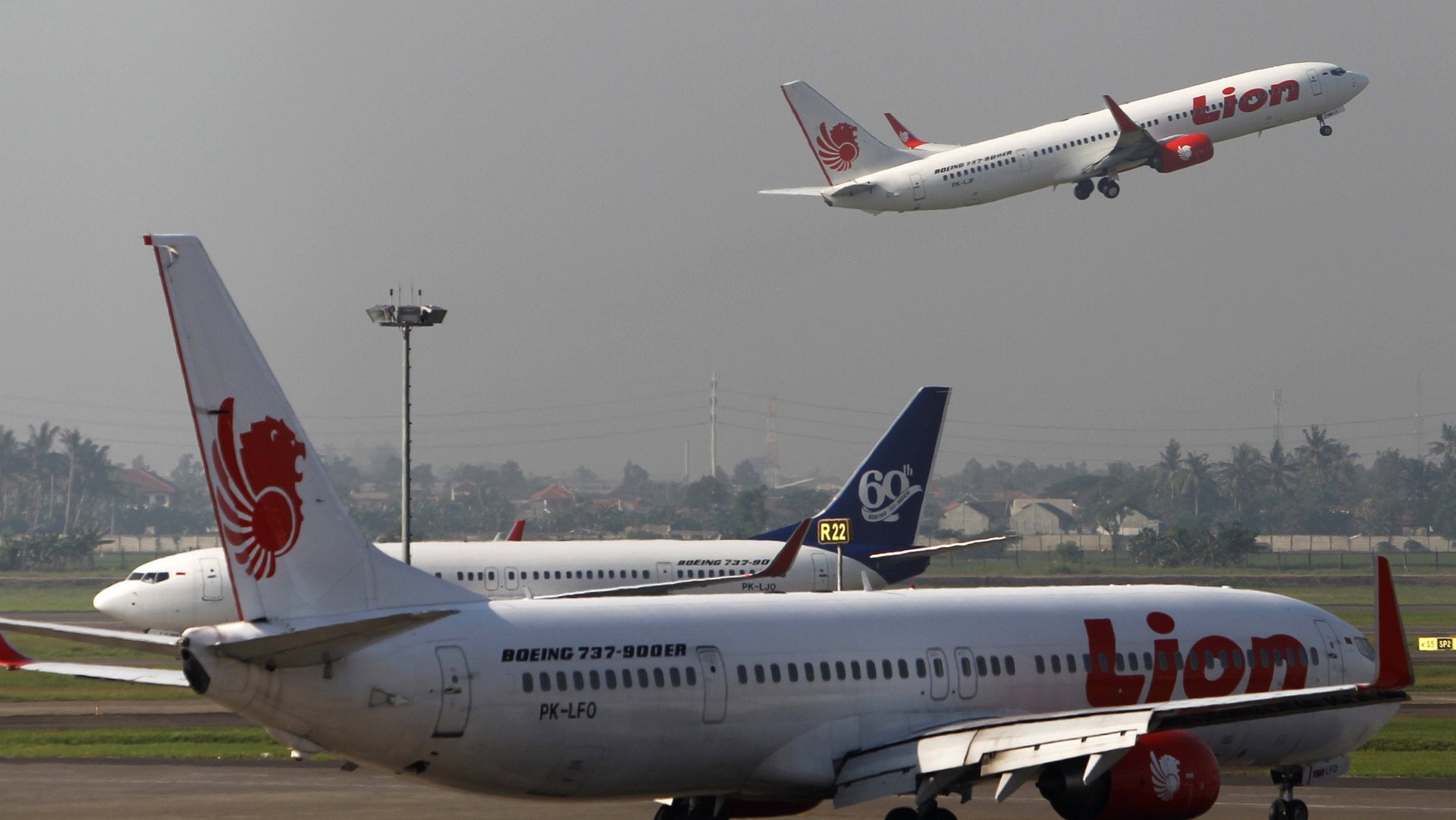Singapore-Jakarta is the world’s fastest-growing airport route—and that’s bad news for Indonesia
The 80-minute flight from the Southeast Asian city-state of Singapore to the bustling Indonesian capital of Jakarta is the world’s fastest-growing international airline route, with the number of return seats set to climb 24% to 130,000 in November.


The 80-minute flight from the Southeast Asian city-state of Singapore to the bustling Indonesian capital of Jakarta is the world’s fastest-growing international airline route, with the number of return seats set to climb 24% to 130,000 in November.
But the surge in traffic isn’t necessarily a good thing for Indonesia. Much of the increased travel is due to the country’s persistent infrastructure challenges, especially difficulties expanding Jakarta Soekarno-Hatta International Airport.
The airport’s limitations—its runways are not yet able to handle the fully-loaded Boeing long-haul jets that flag carrier Garuda wanted to fly to London’s Gatwick airport, for example—mean that there are no direct flights from Europe to Jakarta, and many airlines instead route these passengers through Singapore. Crowding is an additional problem, which is why Jakarta-based budget carrier Lion Air, which is close to overtaking Singapore Air as the region’s biggest carrier, chose to build a maintenance facility in Singapore rather than its home market.
“There is no space in Jakarta,” a Lion Air executive told Bloomberg last week. “There was only space for one hangar.”
Indonesia has struggled for years to upgrade its roads, ports, and airports to handle a rapidly growing population and expanding economy. The government has announced plans to spend some $53 billion on improvements, but as of earlier this year at least 10 projects worth a total of $9 billion were “stuck in limbo,” the Asia Sentinel reported, due to a lack of investor interest, delays in project management, and frequent funding flip-flops.
The country is also struggling with slower growth as it tries to narrow its current-account deficit and support its currency through higher central bank interest rates, according to Finance Minister Chatib Basri. The unexpected decision by the US Federal Reserve to continue its massive bond-buying operation this week may give the Indonesian government some extra breathing room to institute structural reforms such as infrastructure improvements, although such projects are notoriously lengthy under the best of circumstances.
Soekarno-Hatta is already Asia’s second-busiest airport after Beijing Capital, and is working to boost its capacity to 66 million passengers a year from 57 million; it was initially built to handle a maximum of 22 million. That project, run by the state-run airport firm, is slated to be completed by the end of 2014. Expect the Singapore-Jakarta route to be crowded until then—and perhaps even longer.